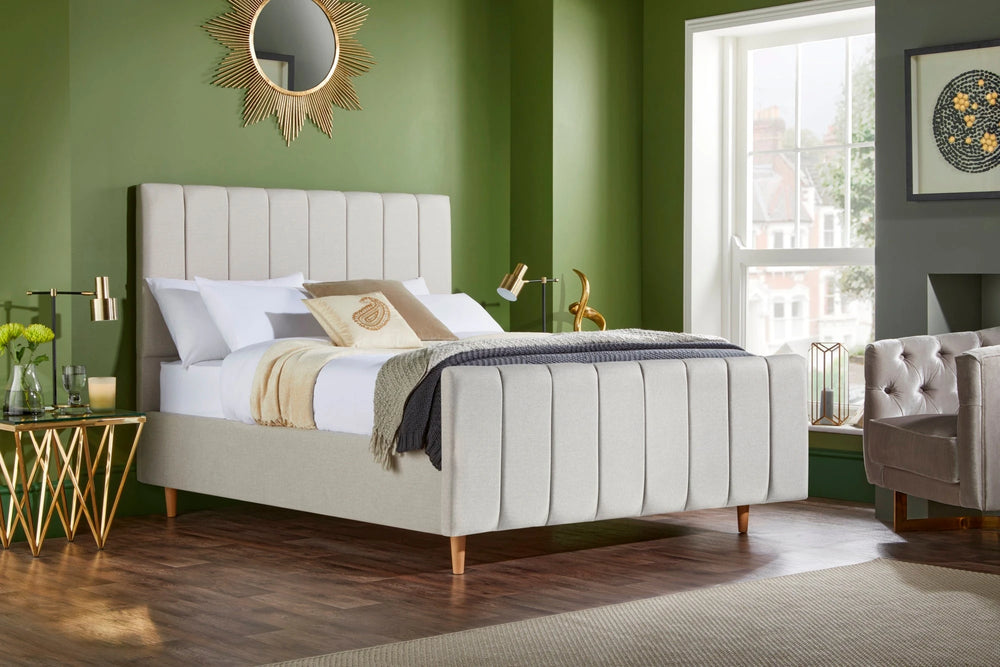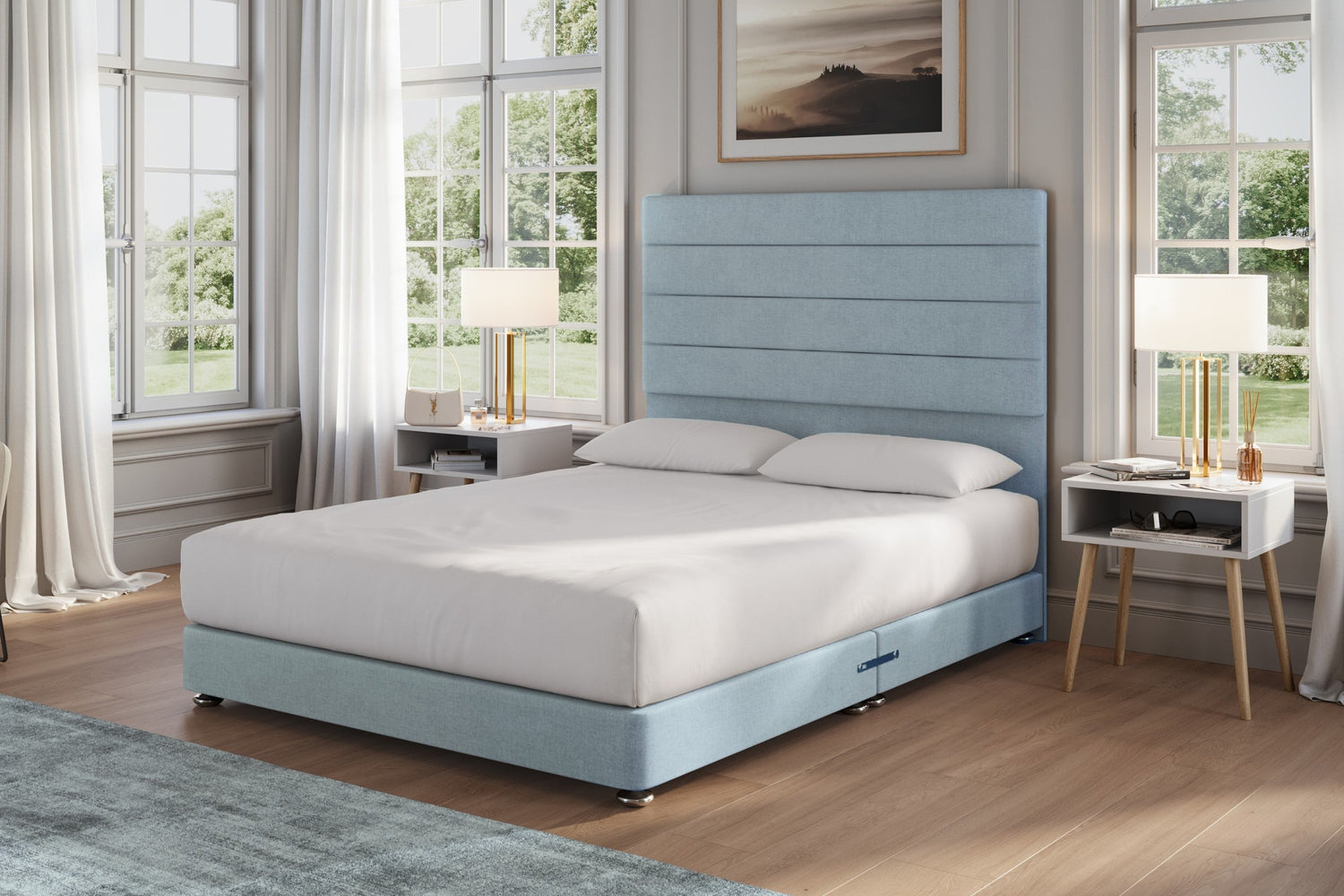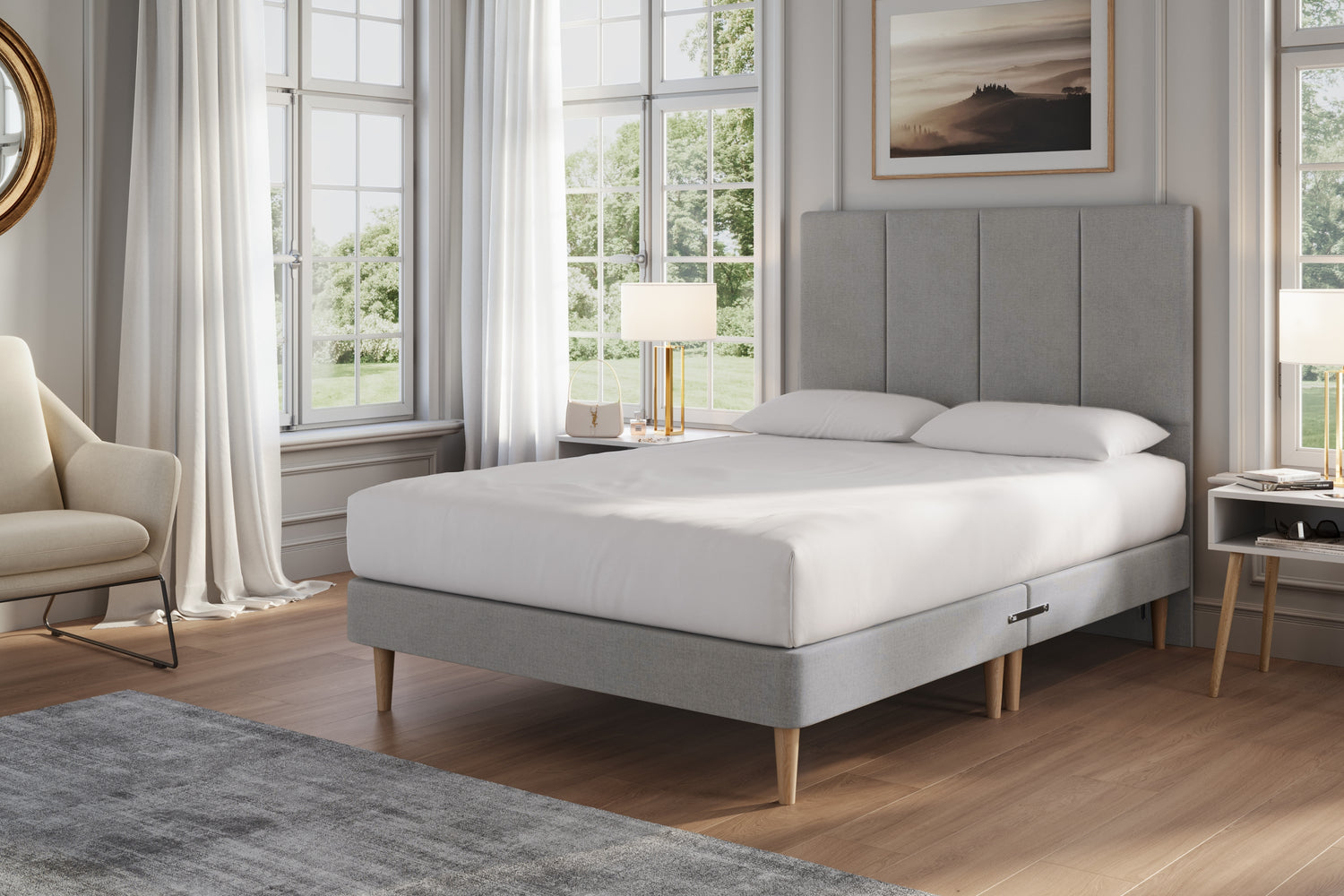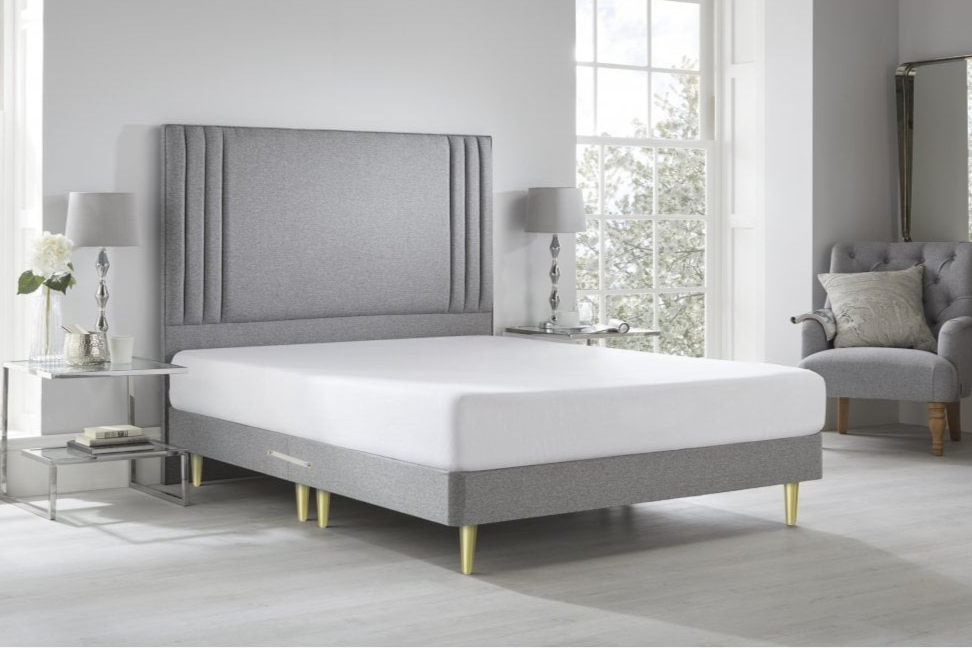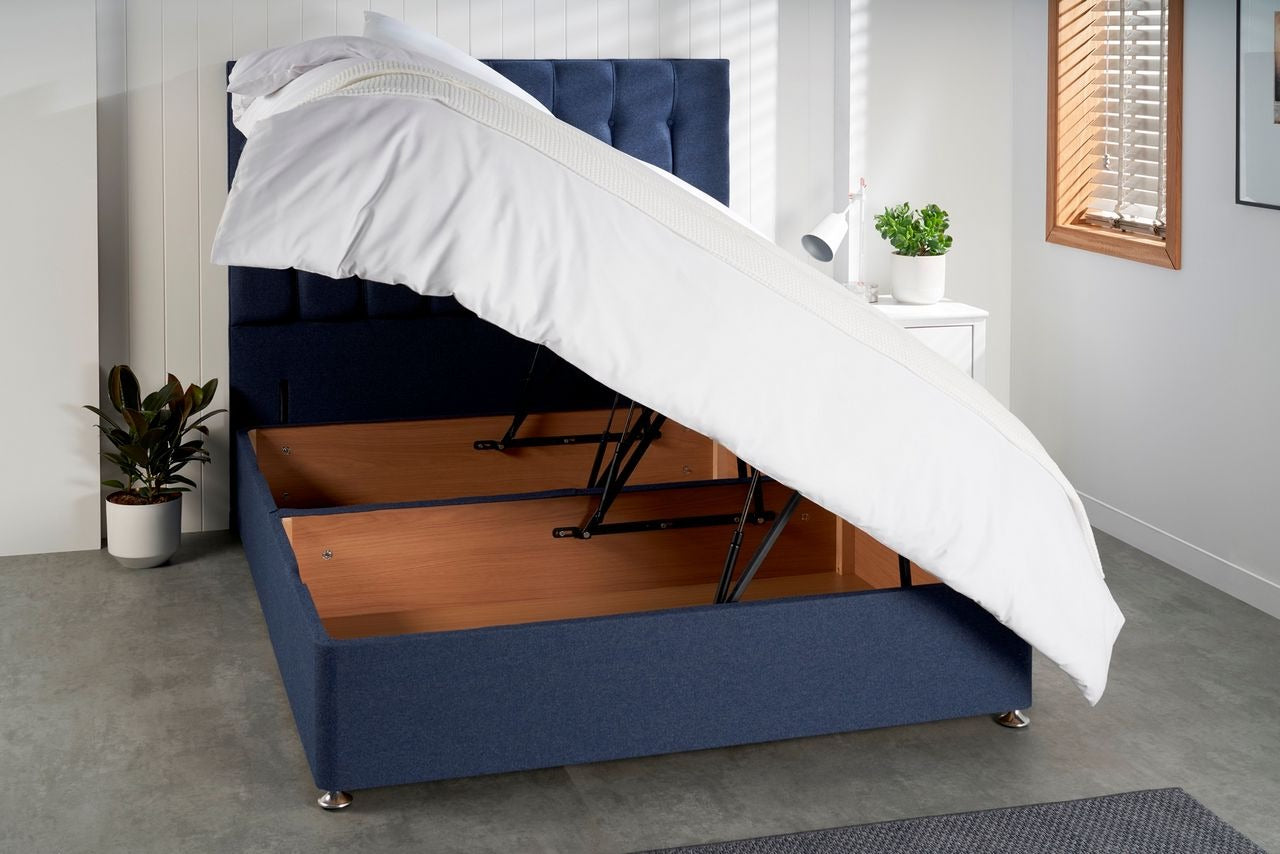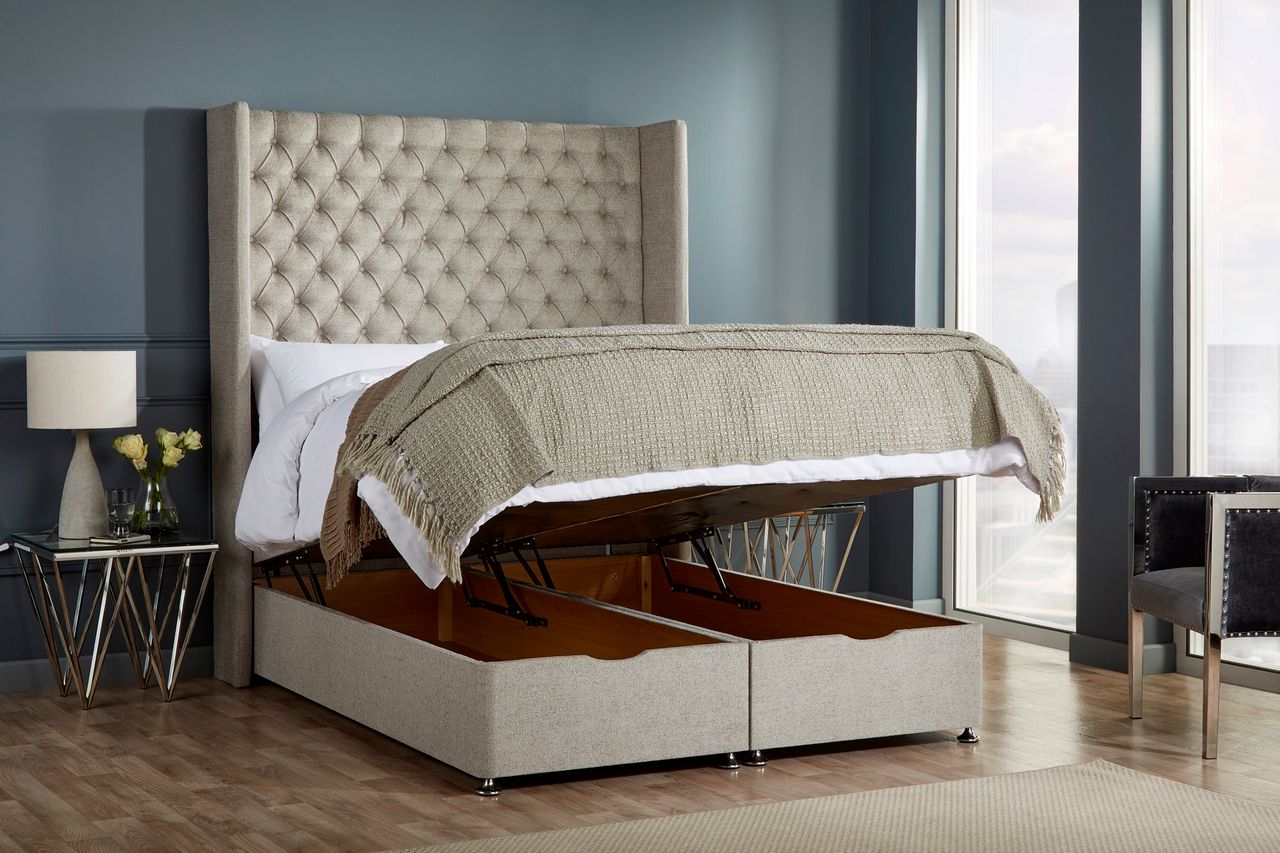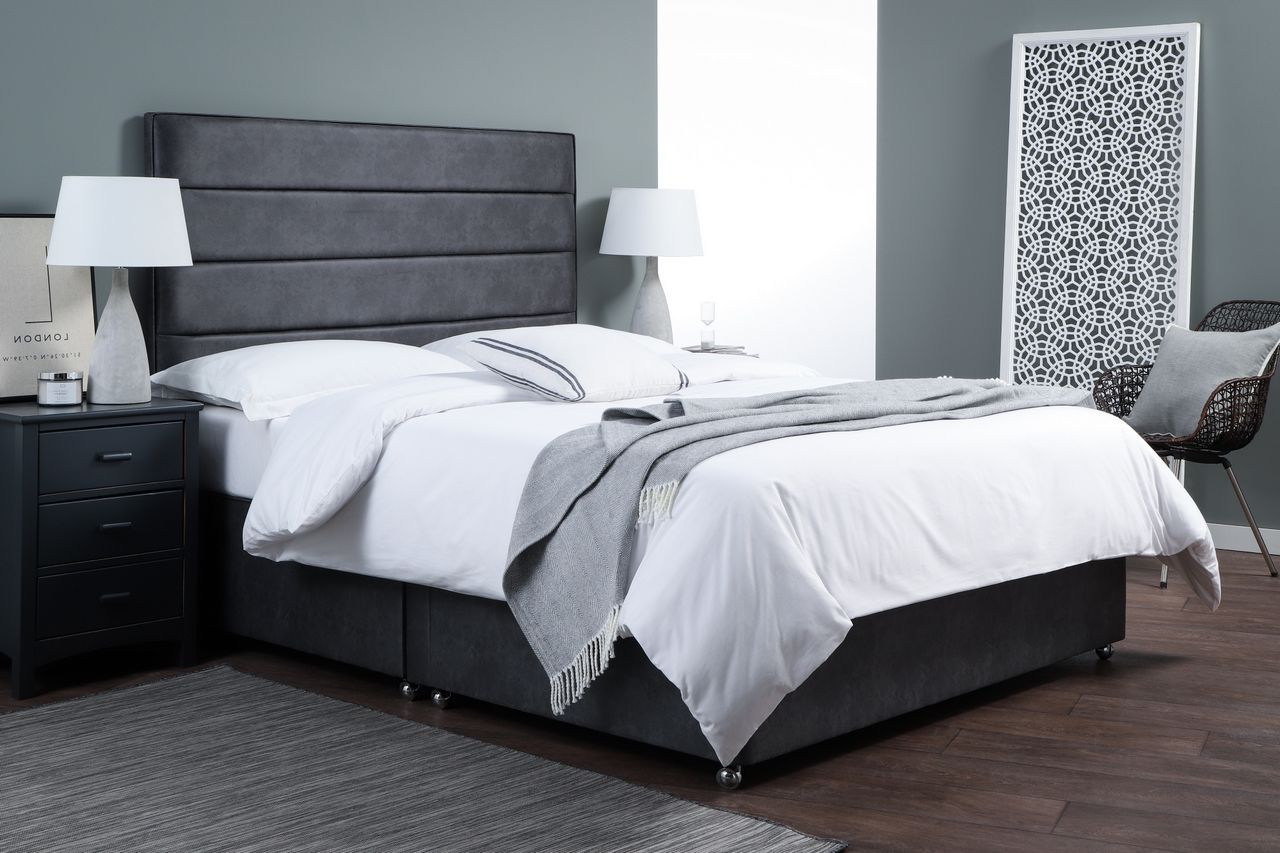There’s nothing worse than a mattress that’s past its sell by date. You keep rolling into the middle, you wake up stiff from head to toe, you’re tired all the time. Sound familiar? Well, mattresses should be replaced every 6 to 8 years, so maybe it’s time to trade it in. We’ve simplified a few definitions to help you get to grips with the basics.
British Beds Direct’s A-Z of mattresses
Air vents: These are positioned on the side of mattresses to increase air-flow and keep fillings fresh.
Fillings: There are a range of different materials used for mattress fillings: cotton (breathable and moisture-wicking), wool (luxurious and resilient); foam (body cushioning), polyester (hypoallergenic) and more.
Gauge: You might hear people talk about the ‘gauge’ of coils, which is the thickness of the wire. The lower the gauge number, the thicker the wire and the firmer the mattress (so a 12 gauge mattress is firmer than a 14 gauge one).
Hybrid: A hybrid mattress uses a combination of pocket springs and memory foam. They’re good for people who like both the support of pocket springs combined with the body-moulding and pressure-relieving properties of memory foam.
Memory foam: Made of polyurethane, memory foam moulds to your shape to target support. It’s sometimes combined with other materials to ensure air-flow and breathability.
Mini-springs: These are used to increase the spring count of a pocket sprung mattress. They are layered on top of anything over 2,000 pocket springs for extra comfort.
Open coil: A widely-made, traditional type of mattress with interlinked coils. A little firmer, more affordable and lighter than a pocket spring mattress, but the springs are all connected which can mean more ‘bounce’ for sleeping partners.
Pocket spring: Each spring is wrapped separately with material so that they move independently of each other. This gives your body support where it needs it, and also means when you move you won’t disturb your partner. Can be more expensive and heavier than open coil mattresses.
Tension: This means the firmness or softness of the bed. It’s a personal choice, but the general rule of thumb is that heavier people need a firmer tension and lighter people need a softer tension. Equally, back sleepers may want to go for a firmer tension, and side sleepers may need a softer tension to keep the spine aligned. Don’t forget, the comfort layer and fillings of the mattress will also affect how ‘soft’ or ‘firm’ it feels.
Ticking: This basically means the cover of the mattress, which can be made in a range of fabrics like cotton or viscose. The type of material used can affect durability and air flow. Some ticking can be treated to make it anti-bacterial, water resistant, anti-static, and even ward off dust mites.
Tufting: Tufting is when tapes are pulled through the mattress at intervals and secured on each side. It keeps the filling of the mattress in place so the mattress doesn’t lose its structure.
If you’d like to have a chat with our experts to get some advice on the right mattress for you, give us a call.
Find Your Perfect Mattress
Answer 5 quick questions to discover your ideal mattress
